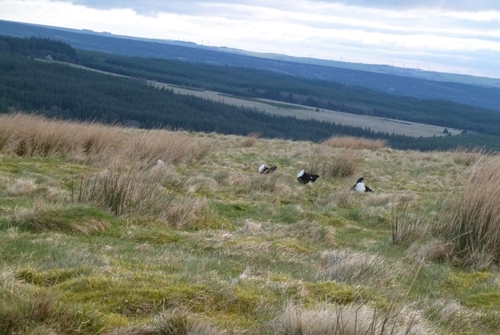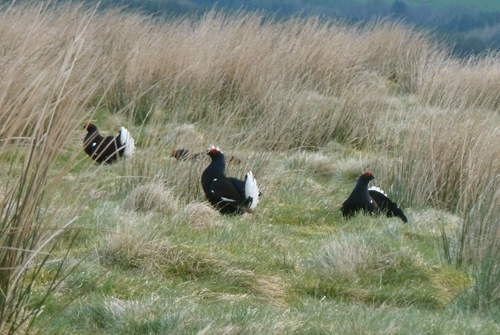Scotland hosts two thirds of the remaining 5,000 black grouse males in the UK, where they occupy moorland and woodland fringe habitats. The last national survey in 2005 identified overall stability in northern areas, but 49% and 69% declines in the southeast and southwest.

Black grouse in Scotland remain threatened, and the Scottish Government’s recent drive to increase woodland cover from 18% to 25% by 2050 to help tackle the climate change emergency is putting pressure on moorland fringe habitats. Further new woodland planting in the short term may provide favourable conditions, but in the longer term it reduces and fragments moorland habitat important for lekking and breeding.
Regular monitoring to assess black grouse distribution, numbers and trends is crucial to their conservation by ensuring that new woodlands are not planted on preferred habitats and that deer fences (an often-fatal hazard to flying black grouse) are appropriately sited or marked. Black grouse are still widespread in Scotland, so dedicated national surveys are expensive, and, in the current economic climate, difficult to fund.
Fortunately, black grouse are surveyed annually at leks across much of Scotland by a network of volunteers in study groups comprising reserve wardens, gamekeepers, amateur birdwatchers, conservation professionals, stalkers and more. In 2013, it is estimated that they alone surveyed two thirds of the Scottish population.

 In 2019, we secured funding from the Heritage Lottery Fund to work with existing study groups to annually collate summary lek data to evaluate recent regional trends, and to increase survey cover by establishing two new groups and through re-invigorating two others. This information will be used to help ensure that important habitats are protected from development, thus utilising this huge voluntary effort to inform black grouse conservation programmes now and into the future.
In 2019, we secured funding from the Heritage Lottery Fund to work with existing study groups to annually collate summary lek data to evaluate recent regional trends, and to increase survey cover by establishing two new groups and through re-invigorating two others. This information will be used to help ensure that important habitats are protected from development, thus utilising this huge voluntary effort to inform black grouse conservation programmes now and into the future.
That year, 12 study groups counted a total of 2,210 lekking males. The longest running group is the Perthshire Study Group, which has been now operating for 30 years, whilst a further six groups have operated for more than 10 years, allowing us to consider longer term trends. Since the last national survey in 2005, numbers have increased in Perthshire and Deeside, however declines have been observed in Speyside, Donside, Dumfries and Galloway, Central Scotland and the Southern Uplands. Continuing to collect and collate these data, whilst finely modifying count method consistency, will help cost-effective monitoring of Scottish black grouse into the future.